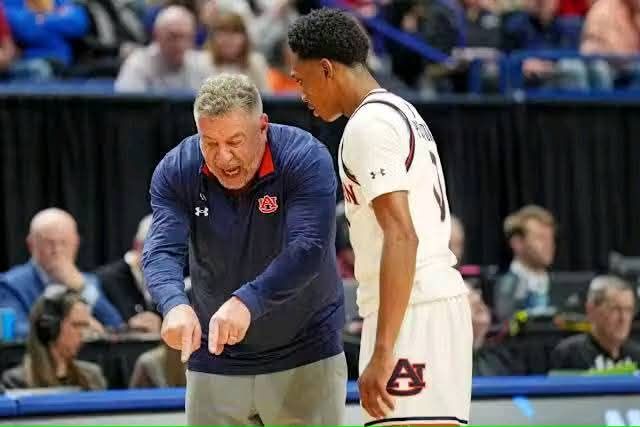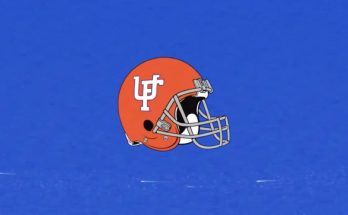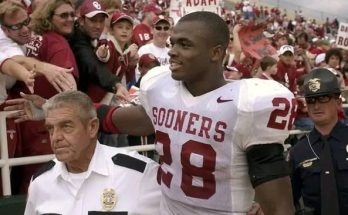In a resounding declaration of loyalty and unfinished business, Auburn Tigers point guard Tahaad Pettiford officially announced he will return for the 2025–2026 college basketball season. The decision reverberated across the Southeastern Conference (SEC) and beyond, signaling that Bruce Pearl’s squad will again be a force to be reckoned with in the national title hunt.
Coming off a strong freshman season, Pettiford’s return ensures continuity in the Tigers’ backcourt. The announcement also comes on the heels of another major return: Auburn’s frontcourt anchor and All-SEC standout Johni Broome, who declared he too would be back in orange and blue for one final campaign. With both stars re-committing to Pearl’s system, the Tigers are now positioned to combine experience, talent, and depth in a way that could push them into Final Four contention.
Let’s unpack what Pettiford’s return means for Auburn, how it complements the frontcourt strength, and why Bruce Pearl might have just landed his most cohesive roster yet.
A Freshman Phenom Grows Up
Tahaad Pettiford arrived at Auburn last year as a highly regarded five-star recruit out of Hudson Catholic High School in New Jersey. Rated one of the top point guards in the 2024 recruiting class, Pettiford turned down offers from Kansas, Kentucky, and Alabama to play for Bruce Pearl. He brought speed, creativity, and high-level playmaking to the Plains.
As a freshman, Pettiford averaged 11.2 points, 4.8 assists, and 1.4 steals per game while shooting 43.6% from the field and 36% from three-point range. He showed flashes of brilliance—especially during conference play—when his game began to slow down, and he showcased a tighter command of Pearl’s high-octane offense. In matchups against top SEC opponents, Pettiford routinely outdueled veteran guards and proved that his ceiling is only rising.
His decision to return, rather than test the NBA Draft waters, speaks volumes about his priorities and belief in Auburn’s 2025–2026 potential.
“We’ve got unfinished business,” Pettiford said in a social media post. “I came to Auburn to win titles and play with great teammates—and I’m not done yet. Let’s run it back.”
Chemistry and Cohesion: Pettiford’s Impact on the Backcourt
Pettiford’s return provides Auburn with something few elite programs can claim: a true point guard with a full season of SEC experience under his belt, still growing into his prime. His presence allows Bruce Pearl to maintain continuity at a position that often defines a team’s ceiling.
In addition to his scoring and playmaking, Pettiford’s leadership qualities became increasingly evident as the season progressed. He was vocal on the court, took pride in defending opposing guards, and acted as a mentor to younger teammates. With his return, Auburn’s backcourt rotation will be built around a stable and dynamic leader.
He’ll be joined by returning combo guard Denver Jones, as well as 2025 newcomer Makai Sumpter, a sharpshooting wing from Georgia. That trio offers Pearl the versatility to go big or small, to speed up or slow down the tempo, and to defend a wide range of positions.
Johni Broome’s Return: Frontcourt Reinforcements Multiply
While Pettiford runs the show from the perimeter, Johni Broome will continue to anchor things in the paint. The 6-foot-10 senior is coming off his most dominant season yet, averaging 17.6 points, 9.2 rebounds, and 2.3 blocks per game. He was a double-double machine and the emotional leader of the team.
Broome flirted with the NBA Draft but ultimately chose to come back, citing a desire to win a national title and finish his college career with a legacy cemented in Auburn lore.
The Pettiford–Broome pick-and-roll combination was deadly in 2024–25. Their on-court chemistry, especially in high-leverage moments, gave Auburn one of the most efficient offensive pairings in the SEC. Pettiford’s elite vision paired with Broome’s footwork and touch created matchup nightmares for opposing defenses.
With Broome returning alongside Pettiford, Pearl has two pillars on which to build his 2025–26 campaign—one in the backcourt and one in the frontcourt.
The Pearl Blueprint: Leadership, Loyalty, and Legacy
Bruce Pearl has long emphasized player development and loyalty as keys to sustaining Auburn’s success. His ability to not only recruit five-star prospects but also retain them is a testament to his leadership and the culture he’s built.
Auburn has had stars jump early to the NBA before—most notably Jabari Smith Jr. and Isaac Okoro—but this time, Pearl has convinced two of his best players to come back for one more shot at glory.
“What Tahaad and Johni are doing is special,” Pearl said in a press release. “They believe in each other, they believe in Auburn, and they believe in what we’re building. That’s the kind of leadership that wins championships.”
Pearl’s system is predicated on high-pressure defense, fast transitions, and smart offensive movement. With Pettiford at the helm and Broome dominating the post, Pearl has all the tools to implement his vision at full throttle.
What It Means for the SEC Title Race
With both Pettiford and Broome returning, Auburn instantly enters the discussion as one of the top contenders for the 2025–26 SEC crown. They will have to fend off traditional powers like Kentucky, Tennessee, and Alabama—but few teams can match Auburn’s blend of veteran presence, positional balance, and star power.
Auburn’s projected starting five now looks like this:
- PG: Tahaad Pettiford (So.)
- SG: Denver Jones (Sr.)
- SF: Chad Baker-Mazara (Sr.)
- PF: Malik Dia (Jr.)
- C: Johni Broome (Sr.)
Bench depth includes key returnees and incoming freshmen, giving Auburn the flexibility to adjust based on opponent and style of play.
Preseason rankings will likely put Auburn in the top 10, and if chemistry develops early, the Tigers could spend much of the season hovering around the top five nationally.
Road to Redemption: NCAA Tournament Aspirations
Despite a strong 2024–25 campaign that included 24 wins and a second-place SEC finish, Auburn’s season ended earlier than hoped in the NCAA Tournament’s second round. The loss left a bitter taste and fueled a hunger that both Pettiford and Broome referenced in their announcements.
The Tigers haven’t reached the Final Four since their historic 2019 run, and Pearl has made it clear that the goal is no longer just making the tournament—it’s winning the whole thing.
Pettiford’s development as a true floor general will be pivotal. His return not only boosts Auburn’s offense but also stabilizes a locker room that now features experienced voices with clear vision and purpose.
NBA Implications: A Smart Business Decision
Though Pettiford was projected as a possible late second-round pick in the 2025 NBA Draft, his return to Auburn allows him to elevate his stock considerably. With more time to refine his shooting, strengthen his defensive fundamentals, and lead a contending team, Pettiford could rise into the first-round conversation for 2026.
Similarly, Johni Broome’s decision to delay his pro career could make him one of the top big men in next year’s draft, especially if Auburn makes a deep March run.
This trend of players prioritizing development and legacy over rushing into the professional ranks bodes well for college basketball and for Auburn’s long-term success under Pearl.
Final Thoughts: Tigers Reload, Not Rebuild
The message is loud and clear: Auburn isn’t going anywhere.
Tahaad Pettiford’s return signals the dawn of a new era where Auburn doesn’t just produce stars—they retain them. In an era of one-and-dones and constant transfer portal churn, Bruce Pearl has managed to build something rare: stability at the top.
With Pettiford orchestrating the offense and Broome controlling the paint, the Tigers have everything needed to chase SEC supremacy and potentially cut down nets in April.
Auburn fans have every reason to be excited. The Tigers are roaring back for 2025–26—and the best may be yet to come.



